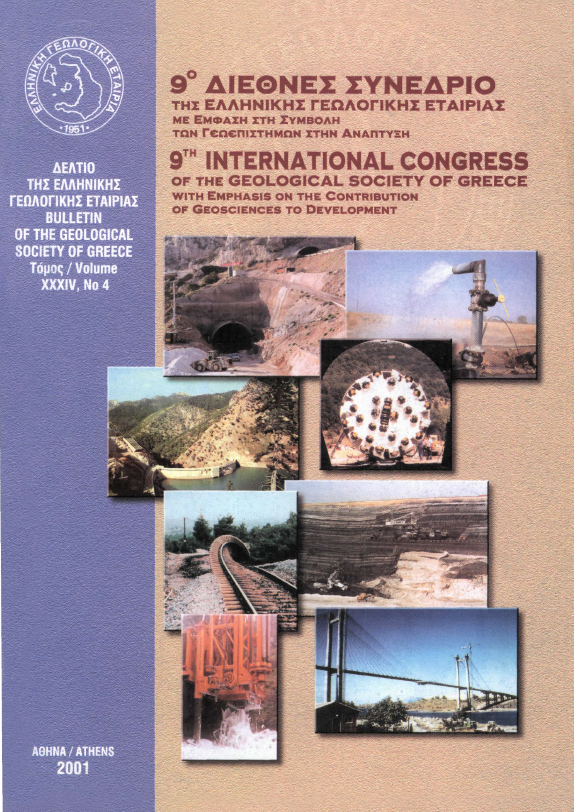SEISIMPACT-THES: A SCENARIO EARTHQUAKE AFFECTING THE BUILT ENVIRONMENT OF THE PREFECTURE OF THESSALONIKI
Abstract
In the framework of the "SEISIMPACT-THES" project (Koutoupes et al., 2004; Savvaidis et al., 2004) a GIS database has been designed to include information on a wide range of components related to seismic risk within the broader area of the prefecture of Thessaloniki. One of these components refers to the distribution of strong ground motion produced by large earthquakes and the ability of a potential future user of the database to retrieve information regarding the distribution of strong ground motion from past destructive earthquakes in the area of Thessaloniki, as well as relative information for realistic future scenario earthquakes in the same area. The selection of future scenario earthquakes that may affect this urban region of interest is based on a combined review of historical data, previous probabilistic and deterministic hazard assessments, seismotectonic and microseismicity studies, relocated seismicity in northern Greece and the experience gained from worldwide research. In this study we present the results from hypothetical rupture of one fault that is located at the suburbs of the city, the Asvestochori fault. Empirical relations applicable to Greece (Papazachos & Papazachou 2003), as well as seismicity information are combined to determine the dimensions of the scenario earthquake source. Strong ground motion for the selected scenario is simulated using the stochastic method for finite faults (Beresnev and Atkinson, 1997). Uncertainties due to unknown parameters such as the rupture initiation point and the distribution of slip on the fault plane are taken into account by examining a large number of random scenarios. The average values from these multiple scenarios are then used to compile maps of strong ground motion parameters (e.g. peak ground acceleration and spectral acceleration). Although the examined scenario earthquake is moderate in size (Mw 5.2), the level of the resulting strong ground motion parameters is indicative of the potential destructiveness of the examined source. Due to the simplicity in the underlying assumptions of the stochastic method, the results of this study are a first-order approximation to the problem of defining expected shaking in the wider area of Thessaloniki. Other strong motion simulation methods of more deterministic character will also be applied for the same purpose in the framework of the SEISIMPACT-THES project.
Article Details
- How to Cite
-
Kiratzi, A., Roumelioti, Z., Benetatos, C., Theodulidis, N., Savvaidis, A., Panou, A., Tziavos, I. N., Savvaidis, P., Hatzigogos, T., Koutoupes, S., & Karantonis, G. (2004). SEISIMPACT-THES: A SCENARIO EARTHQUAKE AFFECTING THE BUILT ENVIRONMENT OF THE PREFECTURE OF THESSALONIKI. Bulletin of the Geological Society of Greece, 36(3), 1412–1421. https://doi.org/10.12681/bgsg.16529
- Section
- Seismology

This work is licensed under a Creative Commons Attribution-NonCommercial 4.0 International License.
Authors who publish with this journal agree to the following terms:
Authors retain copyright and grant the journal right of first publication with the work simultaneously licensed under a Creative Commons Attribution Non-Commercial License that allows others to share the work with an acknowledgement of the work's authorship and initial publication in this journal.
Authors are able to enter into separate, additional contractual arrangements for the non-exclusive distribution of the journal's published version of the work (e.g. post it to an institutional repository or publish it in a book), with an acknowledgement of its initial publication in this journal. Authors are permitted and encouraged to post their work online (preferably in institutional repositories or on their website) prior to and during the submission process, as it can lead to productive exchanges, as well as earlier and greater citation of published work.








